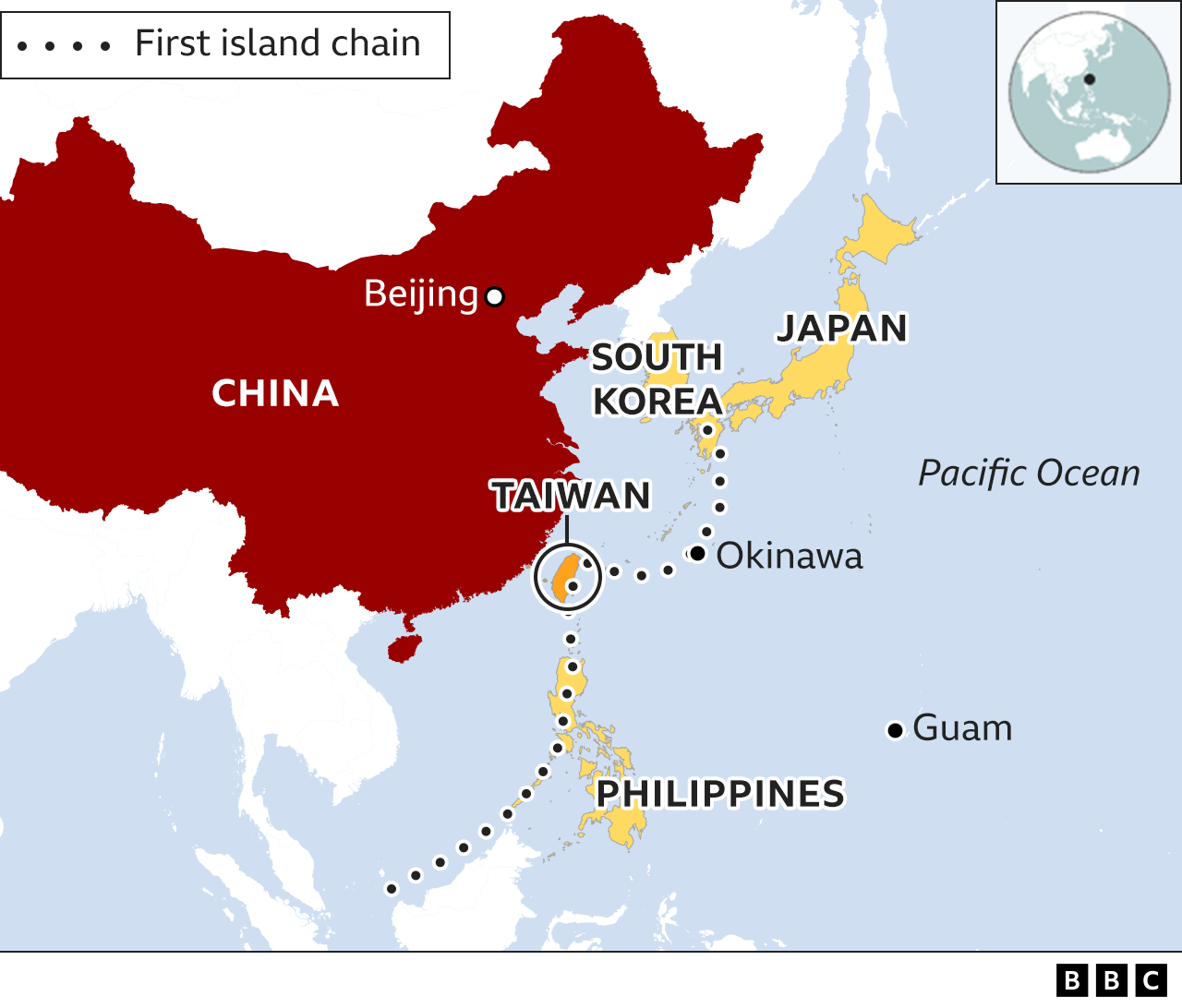
Where does Taiwan stand in relation to China and the world?
- Taiwan was earlier known as Formosa, a tiny island on the east coast of China.
- Chinese republicans of the Kuomintang government retreated from here after the 1949 victory of the communists, and it has since continued as the Republic of China.
Historical Background
- Taiwan observes October 10 — “double 10” — as its national day.
- In 1911 sections of Manchu army rose in rebellion, leading to the overthrow of the Qing dynasty and the end of 4,000 years of the monarchy.
- The Republic of China was declared on December 29, 1911, and was firmly established in 1920s under the leadership of Dr Sun Yat-sen, founder of the Kuomintang (KMT) Party.
- Sun was succeeded by General Chiang Kai-shek, whose actions against the Chinese communists who were part of an alliance with the KMT, triggered the civil war that ended in victory for the communists and retreat of Chiang and the KMT to Taiwan.
- Since its founding in 1949, Peoples Republic of China has believed that Taiwan must be reunified with the mainland, while the Republic of China has held out as an “independent” country.
- The RoC became the non-communist frontier against China during the Cold War.
How the world views Taiwan
- The United Nations does not recognise Taiwan as a separate country.
- Only 13 countries around the world — mainly in South America, the Caribbean, Oceania, and the Vatican — do.
- In 1971, US inaugurated ties with the PRC through the secret diplomacy of Henry Kissinger, national security adviser to President Richard Nixon.
- The US has a policy of “strategic ambiguity” towards Taiwan.
- It maintains ties with Taipei, and sells weapons to it, but officially subscribes to the PRC’s “One China Policy” in which Taiwan does not exist as a separate entity.
- It is this delicate diplomatic balance that Biden’s pronouncement has jolted.
China-Taiwan – US tensions
- In 1954-55, and in 1958, the PRC bombed the Jinmen, Mazu, and Dachen islands under Taiwan’s control, drawing in the US.
- Congress passed the Formosa Resolution authorising President Eisenhower to defend RoC territory.
- In 1955, Chinese Premier declared at the Bandung Conference that he wanted negotiations with the US. But as civil war broke out in Lebanon in 1958, China resumed the bombing, provoking the US to supply Taiwanese outposts on the islands.
- The PRC and ROC then arrived at an arrangement to bomb each other’s garrisons on alternate days – this continued until 1971.
- The US has maintained a ‘One China’ policy since the 1970s, under which it recognises Taiwan as a part of China. But it has unofficial ties with Taiwan as well — a strategy that is known as strategic or deliberate ambiguity.
- The most serious encounter was in 1995-96
- China began testing missiles in the seas around Taiwan, triggering the biggest US mobilisation in the region since the Vietnam War.
- It led to the re-election in 1996 of President Lee Teng-hui, seen by the Chinese as a pro-independence leader.
Independence politics
- In 1975, Chiang Kai-shek died, martial law was lifted, and Taiwan got its first democratic reforms.
- Starting from the 1990s, and despite the missile crisis, relations between the PRC and RoC improved, and trade ties were established.
- As the British prepared to exit Hong Kong in 1999, the “One China, Two Systems” solution was offered to Taiwan as well, but it was rejected by the Taiwanese.
- In 2000, Taiwan got its first non-KMT government, when the Taiwanese nationalist Democratic Progressive Party (DPP) won the presidency.
- In 2004, China started drafting an anti-secession law aimed at Taiwan; trade and connectivity, however, continued to improve.
- Taiwan has massive economic interests, including investments in China.
- Pro-independence sections worry that this might come in the way of their goals.
- Inversely, the pro-reunification sections, as well as China, hope that economic dependence and increasing people-to-people contacts will wear out the pro-independence lobbies.
India – Taiwan Relationship
- India does not have formal diplomatic ties with Taiwan yet, as it follows the One-China policy. However, during then Chinese premier Wen Jiabao’s visit to India in December 2010, India did not mention support for the One-China policy in the joint communique.
- While following the One-China policy, India has an office in Taipei for diplomatic functions — India-Taipei Association (ITA) is headed by a senior diplomat. Taiwan has the Taipei Economic and Cultural Center (TECC) in New Delhi. Both were established in 1995.
- Ties focus on commerce, culture and education. Now in their third decade, these have been deliberately kept low-profile, owing to China’s sensitivities. For example, parliamentary delegation visits and legislature-level dialogues have stopped since 2017, around the time the India-China border standoff happened in Doklam.
Conclusion
- Beijing has never recognised the existence of Taiwan as an independent political entity, arguing that it was always a Chinese province.
- Taiwan says that the modern Chinese state was only formed after the revolution of 1911, and it was not a part of that state or of the People’s Republic of China that was established after the communist revolution.
- The fact that neither side US and China wants, nor can afford, a military confrontation may yet see the current tensions defused with each side walking away and claiming a show of strength for their domestic audiences. The latest crisis has, however, made clear the perilous state of relations between the world’s two biggest powers. It is unlikely to be the last.